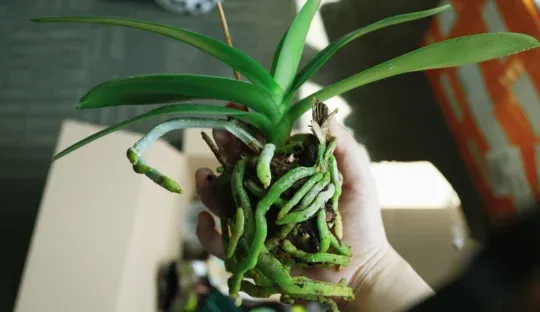Orchids are known for their beauty and elegance, but after the flowers fall, many wonder what to do to keep these plants healthy and promote future lush blooms.
In this article, we will explore several tips and techniques for caring for your orchids after the flowers have fallen, ensuring they continue to thrive and delight your eyes.
The importance of post-flowering care
Orchids are plants that can bloom several times throughout the year, as long as they receive adequate care.
After the flowers fall, it is crucial not to neglect their maintenance, as it is during this period that the plant prepares for its next flowering.
So follow these steps to ensure your orchids continue to be a visual spectacle.
Carefully cut old flower stems
Once the flowers begin to fade and fall, it's time to prune the old flower spikes.
Use clean, sharp pruning shears to make the cut about an inch above the node closest to the base of the plant.
Make sure not to damage the node, as this is where new flower stems can emerge from.
Adequate fertilization
After flowering, your orchids need additional nutrition to prepare for the next flowering. Use a fertilizer specifically formulated for orchids and follow label directions.
Generally, it is recommended to fertilize every two weeks during spring and summer, and reduce frequency in fall and winter.
Adequate fertilization will provide the essential nutrients that the plant needs.
Transplant when necessary
Orchids need space to grow and thrive.
If you notice that the pot is getting too small and the roots are crowding out, it's time for a transplant. Choose a slightly larger pot and use an orchid-specific potting mix.
Make sure not to bury the roots too much, as orchids prefer to have their roots exposed.
Maintain a suitable environment
Orchids are sensitive to environmental conditions. Be sure to provide the proper environment for your plants, including temperature, humidity, and light.
Here are some general guidelines:
1. Light
- Orchids generally prefer bright, indirect light.
- Avoid direct sunlight, which can burn the leaves.
- Rotate the plant periodically to ensure all parts receive light evenly.
2. Humidity
- Orchids like a slightly more humid environment.
- Use a tray of rocks and water under the pot to increase humidity around the plant.
- Avoid spraying water directly on the leaves as this can lead to mold development.
3. Temperature
- Most orchids thrive in temperatures between 18°C and 25°C.
- Avoid drastic temperature variations and cold drafts.
Encourage plant rest
To ensure your orchids bloom again, it's important to mimic the resting conditions they experience in nature.
This can be achieved by reducing the amount of water and fertilizer during the fall and winter.
Reduce watering and fertilization by half and allow the plant to enter a resting state.
Monitor pests and diseases
Keep an eye out for any signs of pest or disease infestation. Orchids are susceptible to mites, mealybugs and fungi.
If you notice any yellow leaves, spots or any anomaly, immediately treat the plant with specific products or consult an orchid specialist for guidance.
Be patient
Finally, remember that growing orchids requires patience.
Sometimes it can take a few months for the plant to recover and start producing new flower stalks.
Keep taking good care of it and you will be rewarded with stunning flowers when the right season arrives.
The Orchid's Journey: More Than Just Flowers
Orchids have a fascinating journey that extends beyond the flowering cycle, making the experience of caring for them rewarding for plant lovers.
After the flowers have fallen, the decision to cut the flower stem or not depends on the type of orchid you have. Some varieties produce new flowers on the same stem, while others grow new stems from existing nodes.
Observing the behavior of your orchid is essential: if new flowers appear on the same stem, avoid cutting it and wait for more flowers;
If the orchid grows new stems from the nodes, cut off the old flower stem to redirect the plant's energy toward growing new stems and roots, preparing it for the next flowering.
Rare and collectible orchids
If you are an orchid enthusiast, you may want to consider expanding your collection.
There are many rare and fascinating varieties of orchids that can enrich your experience as a gardener.
Research the orchid varieties that interest you most and be prepared to put in the time and effort to care for them properly.
Conclusion
Caring for orchids after the flowers have fallen is not just a maintenance task; It's an opportunity to observe the ongoing journey of this fascinating plant.
By following the guidelines for pruning, fertilizing, transplanting and general care, you will be preparing your orchids for future flowering.
Remember, patience is key, and not just during the post-bloom care period. Following the complete life cycle of your orchids can be a rewarding experience that connects you deeply with nature.
So continue to care for and enjoy these extraordinary plants.

